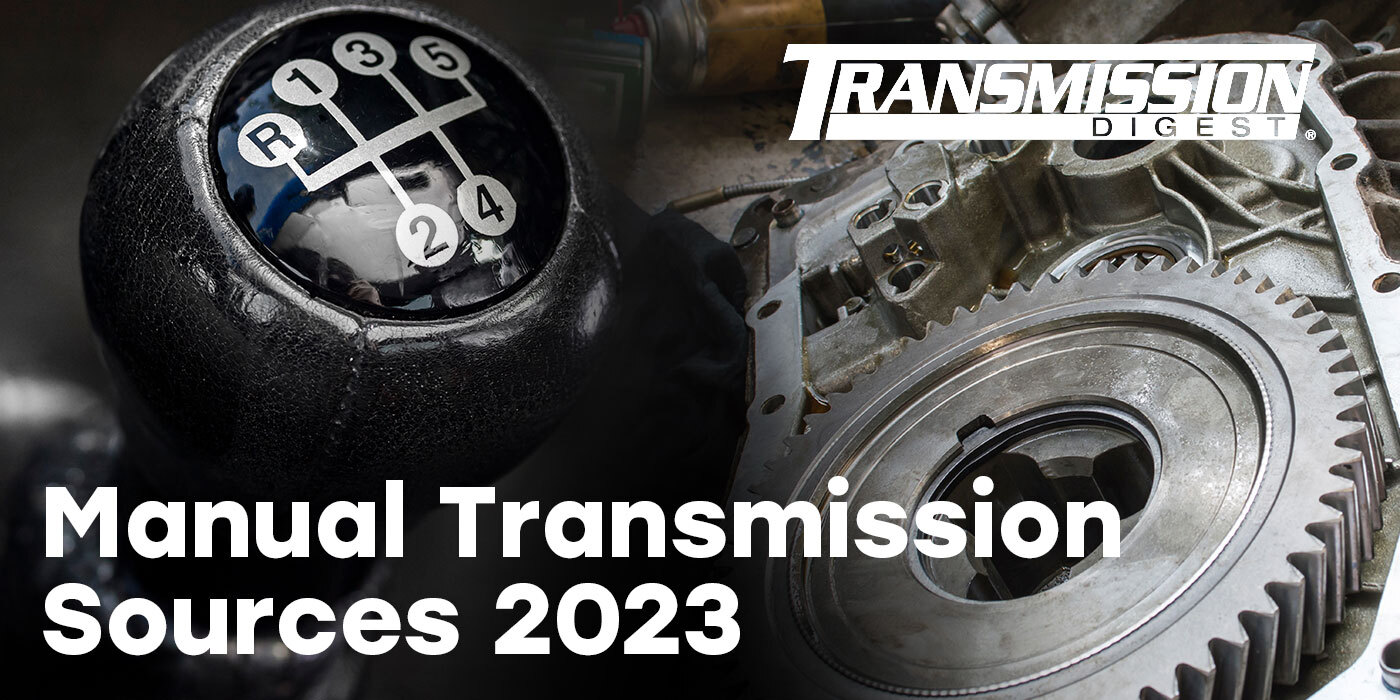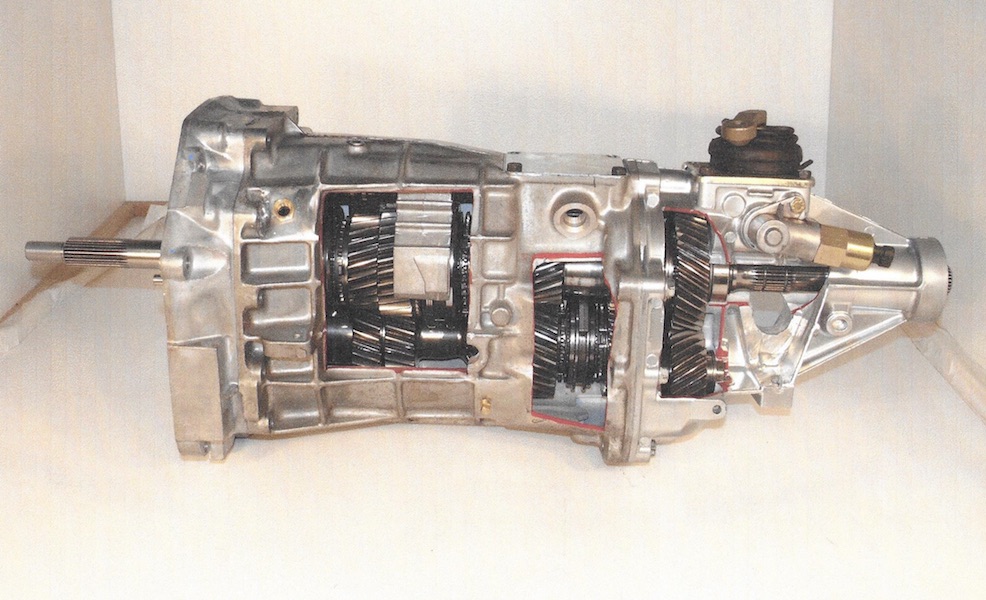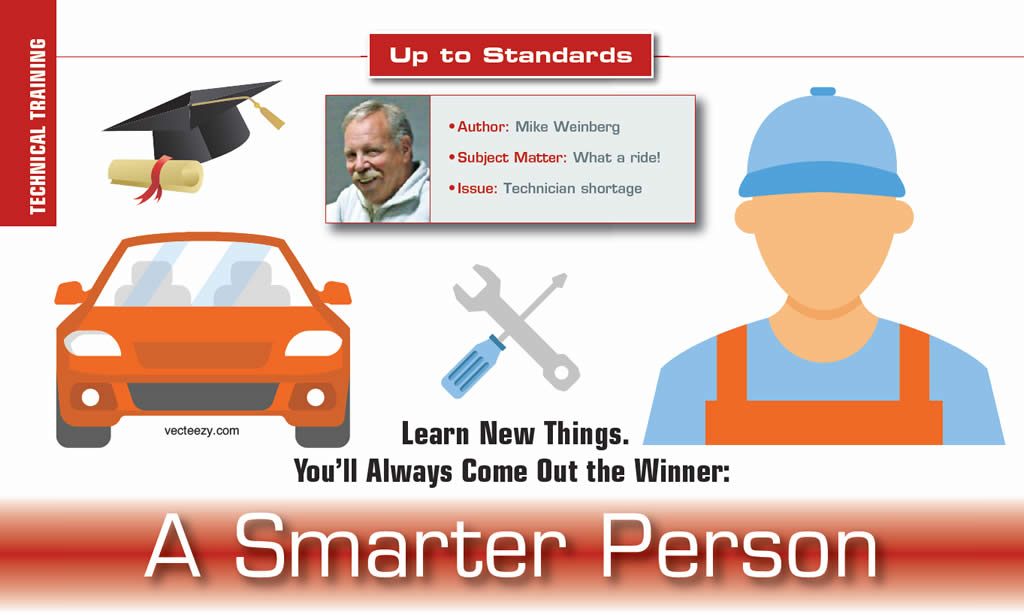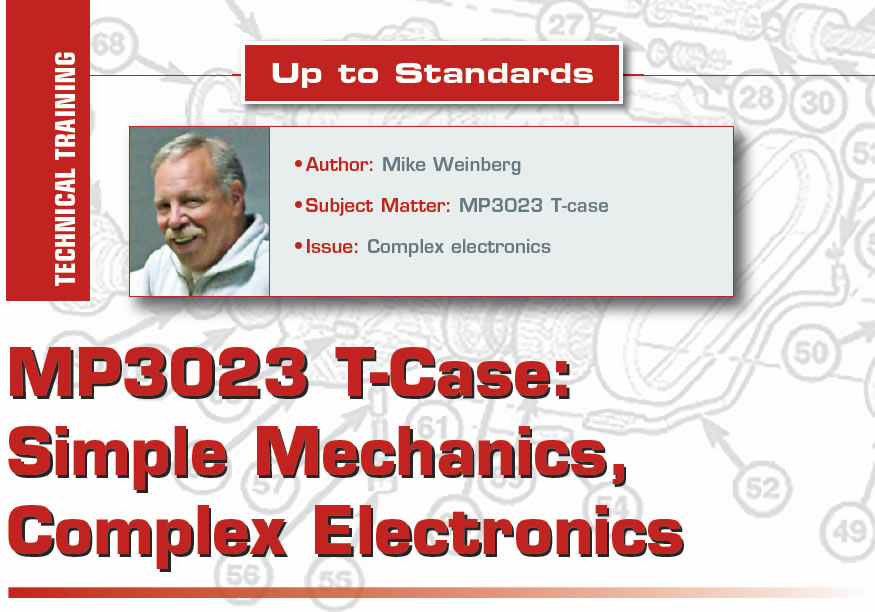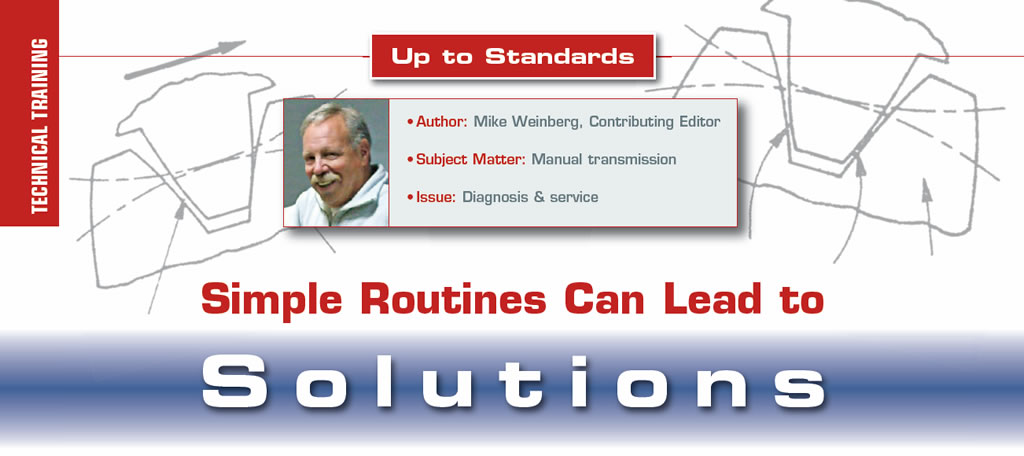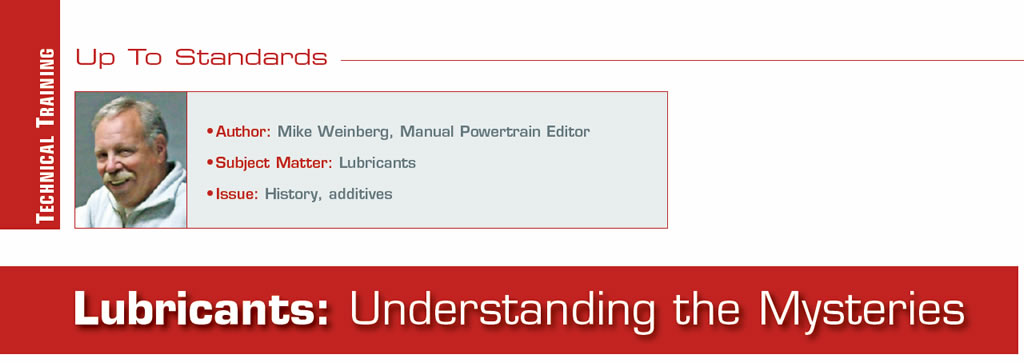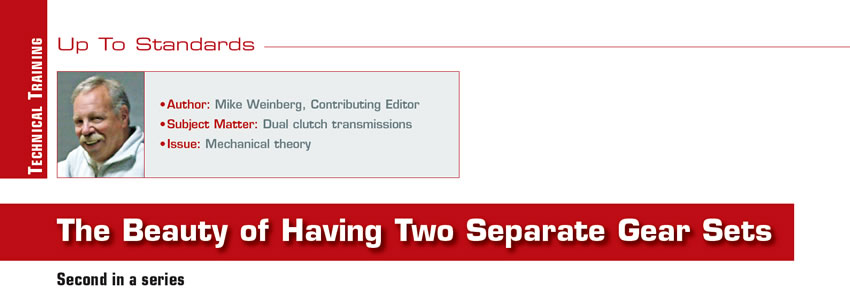
Up To Standards
- Author: Mike Weinberg
- Subject Matter: Tire technology
- Issue: Check tires before working on vehicle
Technical Training
The advancement of technology in the automotive field is rapid and unrelenting. Forces that shape the marketplace, state and federal regulations, the need to attract new customers, and the need to be different and at the same time profitable are driving the car makers to develop technology at a pace never seen before. This also has an effect on prices, with every aspect of the components of the car becoming more expensive and more important to the operation of the vehicle. Simple wear items such as a car battery have improved in technology and longevity with a steep rise in price.
Tire technology has grown along with everything else automotive in better performance and greater durability, and all of this costs more money. The modern tire is one of the major factors in the much-improved handling of all of today’s vehicles. Being that the only thing that enables acceleration, braking, and vehicle handling are the four little contact patches where the rubber meets the road. It wasn’t that long ago that American iron was fast in a straight line, but didn’t stop efficiently and didn’t handle well at all. The tremendous improvement in tire capability has made all of the makes on the road perform much better than past models.
Tires are also a major culprit in many parts failures and diagnostic mistakes for those who do not look at the automobile as a collection of components that are designed to function together and that any one of them is capable of creating drivability and performance issues. I have discussed this many times before on these pages, but it needs to be said again as shops across the country struggle with issues created outside of the units they are working on. The four tires on the vehicle must be all at the same pressure and within one-fourth inch in size or problems will crop up.
Do not be foolish enough to believe that the tire size on the sidewall is functional, it is only a guide. True tire dimensions must be measured with a stagger gauge, a tape around the tread center of the tire, or chalk marks to measure the rolling radius as the vehicles move forward in a straight line. The quick efficient labor-saving way is the stagger gauge, which is nothing more than a giant caliper that permits one man to measure all four tires on the ground in about 5 minutes. Add another 5 minutes to make sure all tire pressures are correct and the same, and a lot of grief departs with good information.

Mismatched tire sizes create problems with computer controlled transfer cases, differentials, stability control, ABS, and suspension and alignment issues. A huge number of vehicles are front-wheel drive and automatic. Inside that transaxle is a differential that is designed to work only when the vehicle is turning to allow the inside wheels in a turn to rotate at a slower rate than the outside wheels, which must cover a longer distance without crow hop.
If the tires are not of the same size and pressures, the differential will be working all the time in a straight line creating potential failures of the side and pinion gears and washers. Many rears and transfer cases are equipped with clutch packs or viscous couplings that will overheat and fail in short order due to a tire size mismatch. Late model vehicles are equipped with ABS and traction or stability control. The computers that operate these systems will sense a slip and begin to operate due to mismatched tires or pressures creating some tough diagnostic problems if you do not measure the tires.
Breaking down the specs
The tire has advanced in many ways, such as tread design, rubber compound, sidewall plies, tread plies, load and speed rating. The side wall of the modern tire is filled with information if you read it and understand the information. There are many requirements from the U.S. Department of Transportation that must be listed on the side wall by law, and they include the brand name of the tire, the tire line name and the tire size, which now gets more interesting.
For example, a tire size of 245/50R18 breaks down as the following information:
• 245 is the width of the tire tread in millimeters.
• 50 is the aspect ratio of the tire which is height of the sidewall divided by the tread width.
• The R stands for radial, which is the construction and direction of the plies that make up the body of the tire.
• 18 signifies the diameter of the wheel, flange to flange, in inches.
• Following the tire size will be a load rating and speed rating, designated, for instance, as 100 Y.

There is a graph produced by the DOT that will interpret the load rating. For example, a load index of 95 is rated to carry 1,521 lbs. if properly inflated. Speed rating is done by letter codes, and the lowest speed rated tire is an L series designed for speeds up to 75 mph. Temporary spares (donuts) are M rated and should not exceed 81 mph. S and T rated tires are found on vans and sedans and then we get into performance rated tires, which are rated as U-124 mph, H-130 mph, V-149 mph. The high-rated exotics and muscle cars will have W-168 MPH, Y-186 MPH, and Z-for speeds above 186.
UTQG ratings-are Uniform Tire Grading Standards which will look like Treadwear 200, Traction A, Temperature A. If you go on line you can find out what the ratings mean, but I never found it necessary to know.
Sidewall plies and tread plies are shown as well as a construction code.
There will be North American Load and Pressure markings.
You may also find use designations such as M&S-Mud and Snow and occasionally a severe Snow Symbol.
What the treads say
There are many issues that can be solved by examining the tires before working on the vehicle. For instance, if you find the front-tire treads to be excellent and the rear treads to be almost bald, you know the driver likes to leave the light in a hurry. This can affect your warranty immediately. When you see a car equipped with low aspect ratio tires, you know it will turn in well due to lower sidewall squirm in the corners, but you will feel the variations in the pavement to be magnified by the harder ride.
Be very careful with cars equipped with oversized tires and rims as many of the driveline angles may have changed affecting handling and promoting failures in the drive line and control arms. Ditto goes for lifted vehicles, which if done correctly will have the spring perches relocated to main proper U-joint angles in the pro shaft and can affect everything from shifter placement to transmission and rear failure as well as speedometers that no longer read correctly.
A quick way to relieve a lot of stress is to make a thorough tire and undercar inspection part of your initial diagnosis along with some written notes as a hard copy of your findings. As expensive as tires have become, more car owners out of necessity will tend to take shortcuts that can come back to bite you in the wallet.


